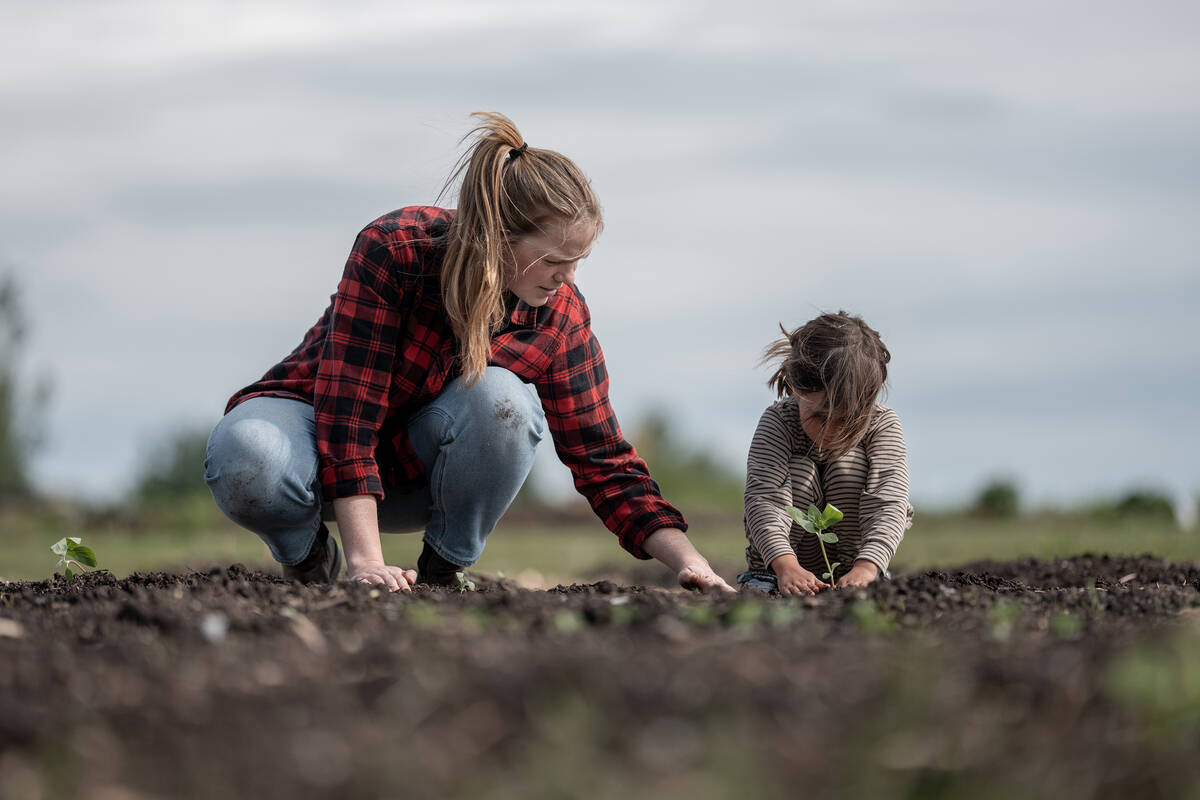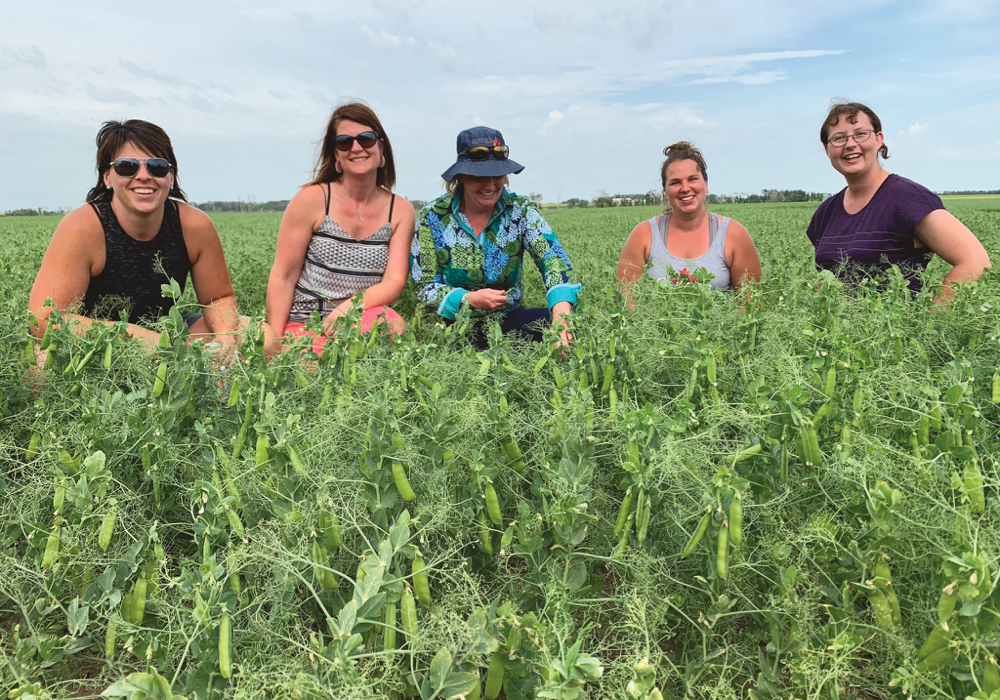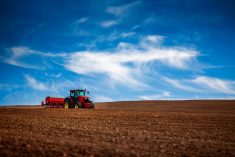It turns out that size can matter. It makes a difference. Farming at different scales doesn’t necessarily make anyone a better or a worse farmer, but it does change the kinds of problems you have to tackle every day, the kinds of decisions you have to make and, of course, the kinds of questions that you end the day still wondering about.
And, perhaps surprisingly, it can change some other pretty important things too.
During Rob Saik’s 40-year career as an agrologist, entrepreneur and consultant, he has met many of these talked-about farmers. They excel at running successful large-scale businesses. They’re shrewd, they’re high-energy, and they have something else in common too. They often feel isolated. You could even say they’re lonely.
Read Also

Farm succession: Where to begin?
Recognizing that the process of farm succession is lengthy, involved and requires a solid end goal can help farmers determine where to start.
Research has shown that entrepreneurship in any field can be a lonely journey. When you’re doing business in a rural area but farming on a different scale than most of your neighbours, the feeling intensifies.
So here’s a look inside something that spills out of that, and a look too at whether it holds potential for other farmers.
It’s tied in with the reason Saik, CEO of Saik Management Group Inc. and AGvisorPRO, started the PowerFARM program 10 years ago. It brings together savvy farm managers from Manitoba, Saskatchewan and Alberta and organizes closed and confidential peer groups.
Saik is also driven by his own experience with Strategic Coach, a business coaching program led by entrepreneurs Dan Sullivan and Babs Smith in Toronto. He has participated in personal and professional coaching sessions every 90 days for nearly 30 years and has experienced the benefits of both peer learning and professional facilitation.
“When you’re farming at a high level, the conversations you want to have aren’t conversations that most of your neighbours would relate to,” Saik says. “I wanted to create a peer group that is a safe place for farmers to talk openly about their issues and a place where I could provide leadership based on the things I’m learning in other networks.”

10 years ago
Jim Pallister was one of the first farmers Saik approached to join PowerFARM. He didn’t need much convincing to believe a western Canadian peer group was a worthwhile idea. In fact, he had been part of one before.

Pallister, who represents the fourth generation at Pallister Farms Ltd. in Portage la Prairie, Man., completed the executive program for agricultural producers at Texas A&M University in the early 1990s. Professor and extension economist Danny Klinefelter encouraged program alumni to form peer groups for continued support.
Pallister had travelled to Texas alongside three other Manitoba farmers and the four of them established a peer group and held regular meetings for a few years. But over time, all but Pallister moved on from farming so the group disbanded.
He continued to seek out new ways to improve his management skills but as his operation grew, he had less and less he wanted to share with the local coffee shop group.
While Pallister did not know any other PowerFARM members when he joined, he quickly found that they all had a lot in common. “Rob selected people who were at a similar level of evolution in terms of management needs and attitudes towards business,” he says of those early days.
How it works
Since that time, the PowerFARM program has grown to include two peer groups. A maximum 10 farms make up each group, with members paying an annual fee. Because the program is suited to a specific demographic, participants are carefully selected.
Each farm must generate over $1 million in gross revenue and operate under the accrual basis of accounting. They are primarily grain farms, although many members have diverse interests and some lead other business ventures as well.
“The current PowerFARMers collectively represent 302,000 acres across Western Canada but geographically, they need to be comfortable that they are not competing with each other for land, people or other resources,” says Saik.
Diversity in age and gender also adds value to the program. There are many women involved in the second PowerFARM group and Saik finds they add a new dimension to many discussions.
Members must agree to share their financial and business strategies and live by the group’s code of conduct. Essentially, what is discussed within the group stays in the group.
They meet three times per year to participate in sessions facilitated by Saik and farmer and advisor Ulf Geerds.
In March, each group typically meets for two days in Regina. “The March meeting is really about the crystallization of 10 top priorities for each farming operation for the year,” says Saik.
The groups gather again in July and members update each other on the progress they’ve made. They take turns hosting the summer event, which includes a farm tour focused on agronomy and grain handling as well as a social barbeque.
In late November or early December, Saik brings both peer groups together for a joint meeting combined with an industry event like Glacier FarmMedia’s Farm Forum in Saskatoon. It’s a chance for members to step back from the busyness of running their farms and really look at what they have accomplished over the last year.

Why it works
Prior to each meeting, Saik circulates an agenda but it is not set in stone. “There are all kinds of coaching programs you can take and my philosophy is that the success of any one of them depends on consistency,” Saik says.
“I am always bringing new ideas and adding new challenges to the PowerFARM program but I also lead the group through the same exercises again and again because it’s comforting to know what you’re going to work on.”
One such exercise is writing a 30-60-90 plan, or a list of goals and action items for the next 30, 60 and 90 days. Group members also become familiar with DOS discussions, or assessing the dangers, opportunities and strengths facing their operations.
Over time, Saik says the groups have dove increasingly deeper into financial analysis. “We have been benchmarking farmers against each other within the group and now have formed an alliance with MNP LLP so we can also benchmark against their cohort.”
This will increasingly allow the members to categorize data by soil zone and other characteristics and to benchmark more precisely.
Benefits all around
But the value of PowerFARM isn’t all in the formal meetings. For Jeff Wilkinson, the networking opportunities and ongoing conversation between members are just as important.
Wilkinson farms 7,000 acres of durum wheat, canola, lentils and chickpeas near Yellow Grass, Sask., with his father and brother. He’s a recent addition to the second PowerFARM group.
“Rob and I met when we were presenters at a Government of Saskatchewan workshop about technology in agriculture,” he says. “When he told me about PowerFARM, it sounded like something I would be interested in and luckily for me, a spot opened up and I was able to join the second group.”
The opportunity to join a network of like-minded farmers is primarily what caught his attention. Unlike many of his peers in agriculture, Wilkinson studied engineering in university and worked internationally in oil and gas before farming full time.
“I didn’t have much of a network,” he says. “There have been huge benefits to joining a group where everyone can speak openly about economics without any judgment or worry about small town rumour mills.”
As his father prepares for retirement and he and his brother set goals as fifth-generation managers, Wilkinson finds it useful to talk to fellow group members about their struggles and successes in transition planning.
He also appreciates the structure and accountability the group provides. “In farming, there isn’t a boss driving you to improve performance but in PowerFARM, Rob (Saik) is leading you to create action plans for your goals and then present your progress back to the group.”
After 10 years in the program, Pallister says it just keeps getting better. Today he farms 16,000 acres and together with his sons, Bryce and William, stacks up as the largest edible bean grower in the country. Both sons are now active in the peer group and bring new perspectives and ideas — like using WhatsApp for group messaging — to the table.
“The biggest factor is trust because trust enables openness,” says Pallister. “The more we trust each other, the more open we are and the more supportive we become. It’s something that you just can’t get in your own town.”
Looking ahead, Saik, Pallister and Wilkinson think the future of peer groups is bright, and Saik believes there is absolutely a need for more initiatives like PowerFARM.
He has advice here too, though. When new peer groups are formed, their facilitators should be in it for the long-term. Connecting like-minded individuals leads to strong bonds but new and fresh ideas keep the meetings vibrant, he says. “I have a high degree of commitment to these groups and I’m as excited about PowerFARM today as I was 10 years ago.”















